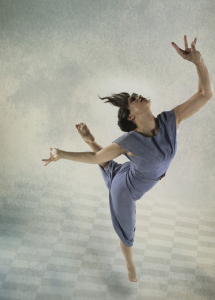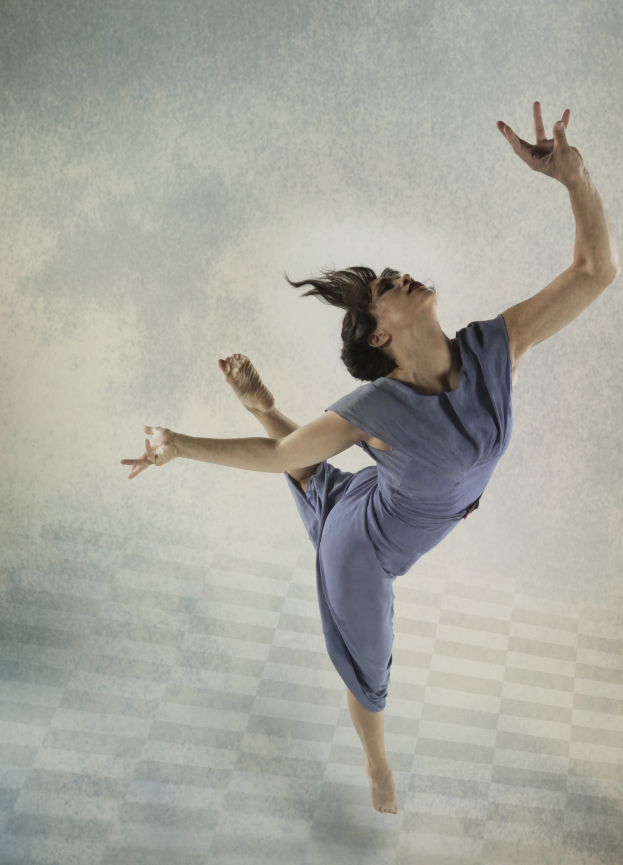DURING A RESIDENCY at the American Academy in Rome, ODC’s Founder and Artistic Director Brenda Way remarked on the way early Romans conceived of the future, not by looking forward but by facing the past. Way noted “in Latin we see the turn of phrase: ‘Turn around to see what’s coming next.’ I have always thought of artists as being the vivid front edge of the past. Now I am moved to consider, which way are we looking?”
The question that Way raised in 2009 finds a particular echo this year, as ODC celebrates its 45th Anniversary. Fueled by the collaborative and inquiry-based spirit that permeated the sixties and seventies, ODC started as a collective at Oberlin College in Ohio in 1971. In 1976, attracted by the sense of possibility and invention that San Francisco offered, the group boarded a yellow bus and left Oberlin. In those 45 years of making and expanding, ODC has maintained its intense commitment to community, artistic sharing and civic consciousness. Way and I sat down to discuss ODC’s history and how its future might take shape.
Marie Tollon: What count as some of ODC’s most significant moments in these last 45 years?
Brenda Way: There are so many. I would say leaving Oberlin and coming to the Bay Area in 1976 and a few years later getting a mortgage from Wells Fargo in Walnut Creek to buy the corner building in 1980 after being evicted from our first studio on Mariposa Street. An emblematic moment was opening night at this new space [the New Performance Gallery, ODC Theater’s former name]. We only had half the doors down and the jazz tap ensemble performed on it. We had porta potties on the empty lot, Christmas lights strung up over the floor and chairs on the dirt… the whole thing embodied the spirit of the group: we were doing it ourselves and no matter what happened, we would forge ahead. The review naturally talked about the porta potties.
There have been a series of artistic projects that were important. When my son was diagnosed with a brain tumor, I worked with the dancers on Investigating Grace while I struggled with the question of “why bother to make dance?” The deep relationship of the dancers to the material and the creative process really reaffirmed the value of artistic enterprise for the sustenance of the human spirit. On a lighter note, producing Toe to Toe with Warren Hellman was a big deal, and his spirit was a gift. Choreographing with student athletes from Cal [Berkeley] was fresh. Their capacities were deeply focused and very extreme. It was also inspiring how many people could connect to dance through their appreciation of sports. Of course, working in collaboration with KT, as well as with Andy Goldsworthy, Zoe Keating and RJ Muna on Boulders and Bone was an inspiring and invigorating process.

On the touring front, the company selection by BAM to be one of the first companies for the State Department DanceMotion tour of South East Asia was thrilling. We were in Burma before the borders were opened. Although you read about the meaning of art in repressive cultures, it’s very different when you’re there and you see the profound [effect] that dance can have as a diplomatic connector. People who were afraid to be seen at our concert came by the hundreds, slipping in with their heads bowed. Our month-long tour in Russia in 1989 was also a high point due to the strength of dance and its place in the Russian culture.
The opening of the Commons was memorable. So many people participated in the celebration, performing their work all over the building. It was a profoundly generous and exciting event. And when we opened, Rick Coughlin and his crew of health practitioners launched the dancers’ clinic there, which was a fantastic statement of caring for the people in our profession and something I had never imagined. The subsequent collaboration with Rhythm and Motion stands as another critical turning point in ODC’s life and embodied our sixties philosophy that everybody could and should dance. Their spirit fills the Commons with energy on a daily basis.
Seeing the quality of dancers who are willing to put their artistry on the line is a constant source of amazement and delight.
One of the things that has been the most surprising to me as I look back over all of these years is that when we first came to town we wrote an ambitious grant to the San Francisco Foundation. It basically laid out everything we are now—the school, the company, the theater—in tiny form. I never would have guessed it would expand to such a magnitude. There is intense pleasure in seeing organic growth. Maybe it’s because I’m a mom. You have a child who is growing up but you don’t have any idea of the form or future of her life. To be able to accommodate and help nurture new artistic generations has been a profound pleasure. And I do think it is connected to ODC being women artist led. There is always a consciousness about the human culture, not just the work. Not that men can’t think that way but I suspect our organizational culture may be tied to a deeper sense of family.
MT: What is in store for the celebration of ODC’s 45th anniversary?
BW: There are a few things that stand out as celebratory. It is the rst time we are hav- ing a piece created by another artist, Kate Weare. It’s a co-commission by White Bird in Oregon and ODC. It celebrates the begin- ning of a new chapter. KT is making a piece for Private Freeman who has returned after his 8-year walkabout, and certainly that is a celebration of the long artistic relationship one can have with dancers. I’m sure that piece will resonate with a lot of his ODC his- tory but also with what he has accumulated from his artistic life elsewhere. For my part, I am once again working with Paul Dresher after a hiatus of perhaps a decade or more. This is also a celebration of our history. It’s bringing the players that really helped form the aesthetics of ODC to the table again. Looking back to go forward.
MT: You have said: “Individuals have built this organization and individuals will carry it forward.”
BW: There have been some key board members for over 30 years—Lynn Feintech, Sako Fisher—who have been helping keep the business rigorous and entrepreneurial. That’s a huge part of how you can carry on in this world. That and loyalty.
MT: Thinking about loyalty, having the dancers on a 42-week contract is rare in today’s dance community.
BW: That coherent ensemble was very central to my interest in being a choreographer. I’m not sure today’s dancers even want the same thing anymore, but I think a steady work environment can engender commitment and it’s been very important for us to provide that. When somebody chooses to move on, they often come back to teach, to mount repertory, to help work with the Dance Jam. We try to find longterm connections, because their movements, their bodies are still in our repertory, even though they are not there anymore, so I feel loyalty to that, too.
MT: How do you see ODC’s role in the current context of artists and arts organizations being pushed out of the city because of the rising cost of living?
BW: I hope we can work with interested developers, philanthropists or city agencies on the issue of artist housing. I think San Francisco is at risk of losing its deep artistic culture. I hope we will participate in some way in addressing this.

MT: What are the ways that you want to move forward?
BW: I want to try to endow these dance facilities, the ODC Theater and the Commons. I never thought about such long-term things in the past because contemporary art is really about today and I think we feel the need to invest all our energy into that. But now I think I have to make sure that this campus remains viable. If we can raise an endowment that pays the facility overhead, then succeeding generations, both artistic and administrative, can focus on what they want to do programmatically and not be swamped by the hungry demands of overhead. They can focus more on responding to the changes that will come.
Succession is on the horizon, too, although somewhat in the distance. We have enjoyed the stimulation, the give and take of more than one choreographer so we are exploring how that might look in the future.
Anything that we do going forward, I would hope we will remember that there will always be limited resources and that our core mission is built around making work, helping people make work and presenting it. I hope what goes forward as we move on are the values that we built this organization around. New generations will find different forms but I hope the communitarian values, the values of nurturing art and artists, will hold true.
This article appeared in the March 2016 issue of In Dance.


